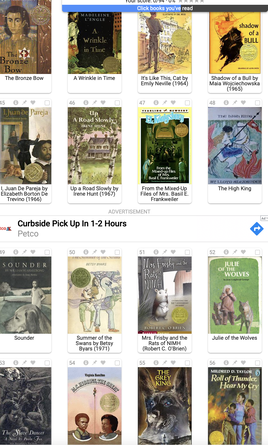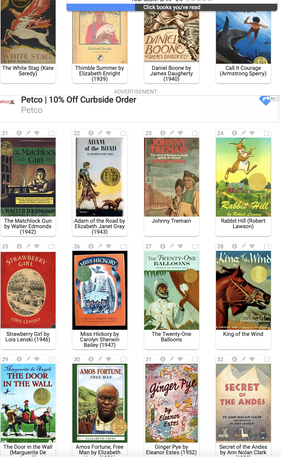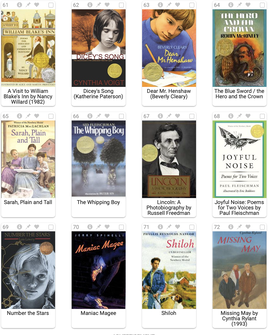I never have gotten over my love of kid's books. Especially novels. So...why not as many Newbery books as might come to hand?
I'm not ending the experiment yet, especially since there doesn't seem to be any equally reliable award for "adult" fiction. And because there are so dang many yet to go. Here's a short list that I read (or re-read) this summer. My Side of the Mountain by Jean Craig George Getting Near to Baby by Audrey Couloumbis Echo Mountain by Lauren Wolk Hollow by Lauren Wolk Three Times Lucky by Sheila Turnage Slave Dancer by Paula Fox Enchantress from the Stars by Sylvia Louise Engdahl Abel's Island by William Steig The One and Only Ivan by Katherine Applegate Turtle in Paradise by Jennifer Holm The Crossover by Alexander Kwame A Long Way from Chicago by Richard Peck A Year Down Yonder by Richard Peck Wittington by Alan Armstrong Lily's Crossing by Patricia Reilly Giff The Night Diary by Veera Hiranandani Criss Cross by Lynne by Rae Perkins The War That Saved My Life by Kimberly Brubaker Bradley The War I Finally Won by Kimberly Brubaker Bradley Hope Was Here by Joan Bauer One Came Home by Amy Timberlake The Watsons go to Birmingham, 1963 by Christopher Paul Curtis Wish they earned some credit for some middle-school reading team...
2 Comments
So much happened over the summer on the Would-Be Farm, and so little of it has anything to do with us humans. |
About the Blog
A lot of ground gets covered on this blog -- from sailboat racing to book suggestions to plain old piffle. FollowTrying to keep track? Follow me on Facebook or Twitter or if you use an aggregator, click the RSS option below.
Old school? Sign up for the newsletter and I'll shoot you a short e-mail when there's something new.
Archives
June 2024
Categories
All
|



 RSS Feed
RSS Feed
